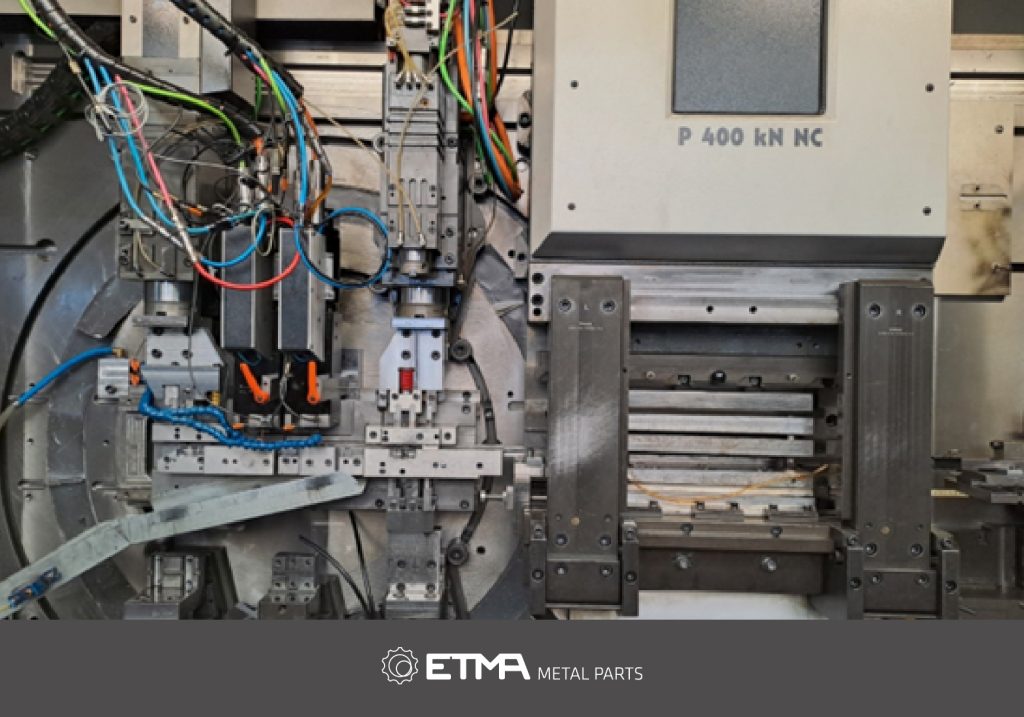
With this new article, we conclude our conversation with Miguel Queirós, an engineer that works as a sales technician at ETMA, regarding the stamping process and its responses to the industry. After covering topics such as the stamping production process, the differences between progressive stamping and transfer stamping and the tool design and manufacture, in previous articles, we conclude the series with ETMA’s stamping machinery.
Can you tell us a little about the production capacity of ETMA in terms of the stamping process?
ETMA has been producing stamped parts since it was founded more than 80 years ago. Its machinery has been constantly renewed thanks to a policy of permanent investment. ETMA currently has mechanical and hydraulic presses ranging from 35 to 250 tonne-force.
This investment has made it possible to sustainably increase installed capacity over the last few years, both in terms of volume and size of parts.
Strategically, ETMA has positioned itself as a manufacturer of small parts. However, in order to respond to projects of its clients, it has felt the need to increase the maximum size of the stamped parts it can manufacture.
What are the main differences between these two types of presses?
Mechanical presses are relatively simple machines that usually allow high cadences.
These presses operate according to the crankshaft-connecting rod principle, with the crankshaft associated to a flywheel, in turn connected to an electric motor with a continuous rotational movement, and with the connecting rod connected to the hammer, which will have a reciprocating linear movement that will promote the opening and closing of the tool, i.e., the stamping cycle.
What about hydraulic presses?
In these machines, the opening and closing movement of the tool is generated by a hydraulic system, which regulates the pressure exerted on the material during stamping. This allows greater control of the deformation stress that develops in the material during the process, preventing the occurrence of problems such as cracks or fissures. However, they are typically slower machines, with a lower cadence.
In ETMA’s stamping sector there is another type of machine that we call automatic forming. In this sector we almost exclusively use equipment from the manufacturer Bihler, which is why we usually refer to this sector precisely by the manufacturer’s name.
Tell us a bit more about these Bihler machines…
The operating principle is similar to that of progressive stamping, but implemented in a slightly different way: in progressive stamping, cutting and folding can take place during any advance step, from the initial to the final, while in Bihler machines there is a specific section of the material advance for cutting and another for folding.
This constructive peculiarity of the Bihler machines has two important consequences: one linked to the process, because it allows for much more complex folding sequences.
The other consequence is that the process has its own logic that is quite different from the one used for progressive stamping, which has an impact on its development and the tool design.
Bihler strip (e.g., terminal)
Because ETMA has had Bihler machines for many years, it has vast accumulated experience and know-how. On the other hand, we have close ties with the manufacturer, who cooperates with us whenever necessary to develop more technically complex processes.
CONCLUSION
Through this series of articles that we are concluding today, we believe it has become clear that ETMA’s mission is to meet the demands in terms of projects and challenges of its clients. Subsequently, ETMA has devised an exclusive system of 10 Integrated Production Processes, which includes Stamping.
This is a winning strategy that also ensures the quality of development, from the project to the final product, with the following advantages:
- ETMA’s vast know-how in the metallurgy and metalworking sectors (84 years);
- The solid experience in the most diverse sectors of activity: automotive, electrical, home appliances, plastic injection/overmoulding, fastening, among others;
- A qualified technical team, with the concern for continuous improvement;
- Certifications in the ISO 9001, IATF 16949 and ISO 14001 standards.
If you would like to know more about the Stamping Process, click here to receive our brochure and see two cases of real application of this process on our clients’ projects.
If you would like to talk to us about a current project, please do not hesitate to contact us.









